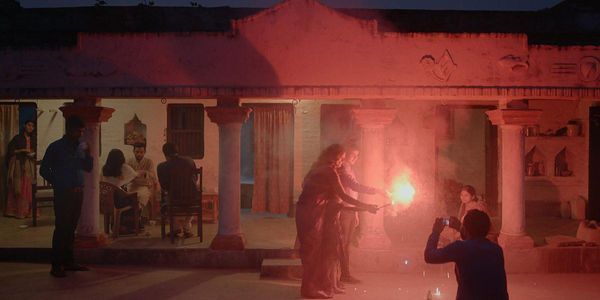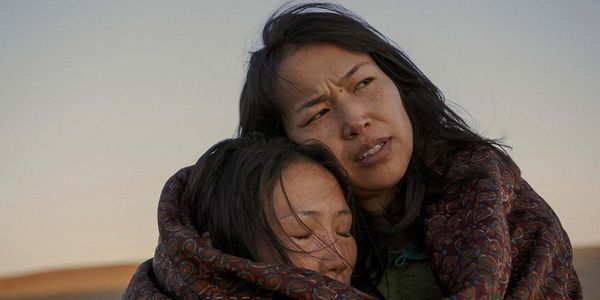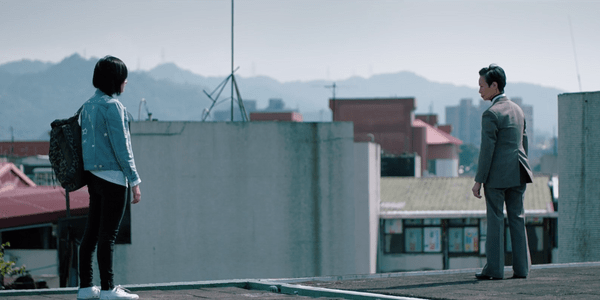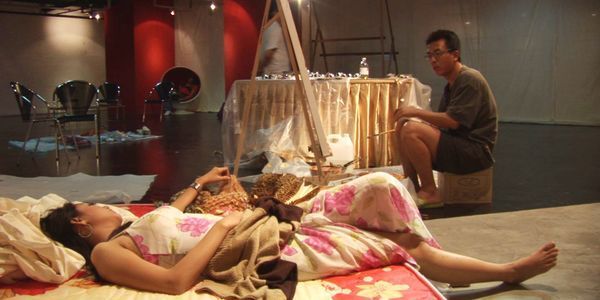San Diego Asian Film Festival 2020 Report 1
This year I was fortunate enough to be reached out to cover a film festival that has never been on my radar. The San Diego Asian Film Festival was founded in 2000 and has been operating as a low-key but important venue for featuring many of the year’s overlooked films by Asian filmmakers. When I read the list of movies that were going to be screening, I was thoroughly surprised and overjoyed. I had found something that I really should have sought out years ago but for maybe by lack of curiosity or simply from the fact that I had no avenue from where to begin my search. SDAFF has eluded me no more, and this year’s slate features movies from giants of Asian cinema like Hong Sang-soo, Lav Diaz, and Jia Zhangke, while also bringing forth new voices like Achal Mishra and Uisenma Borchu. The movies this year weren’t all masterpieces but it was a joy to experience all of them because, in the end, the fact that SDAFF has now been added to my radar is a gift enough.
Gamak Ghar (dir. Achal Mishra) – *****

Nostalgia is one of the most potent but often misused emotional weapons in cinema. It’s a source of melodrama but it is often used either to create ceramic, artificial moments of tear-jerking empathy or to use tawdry self-referential reminders forcing the audience to fill in the gaps with their own memories. Achal Mishra uses nostalgia in an effectively artful way in Gamak Ghar, building a densely layered and brilliantly realized portrait of cultural erosion. He chooses to do this in a Maithili-speaking community in Bihar, near the Himalayas, steeped in tradition.
While Maithili is considered by some to be a ‘dialect’ of Hindi, it has many of its own words and was originally written in Tirhuta and later Kaithi scripts before being adapted into the more common Devanagri script used for Hindi and many other languages in India. The reason I point this out is that adaptation, erosion, and homogenization of communities is central to Gamak Ghar’s examination of the ways that families change through generations. The beginning of the movie is lively and jovial, with kids playing together, many people entering and exiting the central house to chat, play games, gossip, cook, and celebrate a newborn baby. Whether in the warm rays of sunshine or in the cool of night, Mishra’s camera captures an intimacy between family and friends that turns its setting into an isolated paradise. A place where tradition and history collide to create a unique whole of individuals tied by blood and love.
While this intimacy remains throughout the movie, it is a more melancholy one. Mishra’s film transitions in its later two chapters to exhibit the slow deterioration and ultimate death of a family heirloom and with its physical presence gone, the memories existing within it become mere intangible moments of nostalgic feeling. The clothes become more modern, the conversations more disjointed and awkward, the communication siloed into individual units rather than part of a familial camaraderie. When one of the family matriarchs finds out that his younger more aimless brother is planning on selling the property and opening up his own pharmacy, he wonders why he was never informed of this decision.
The movie is comprised of almost all still-shots and they are beautifully composed and conscious of color, framing, and design, which makes them stunning even in their lack of ‘liveliness’. Mishra concentrates on individual elements of a home and of gatherings, making the dissipation and slow degradation of each individual element of the house, and of the people occupying it, undeniable and that much more affecting. This sort of nostalgia can easily be co-opted into melodrama, but instead, Gamak Ghar tells a tale more similar in spirit to David Lowery’s A Ghost Story, where the house, by proxy, transforms quietly and subtly into a ghost same as the people living inside it do… only carried on by a memory of what once was.
Black Milk (dir. Uisenma Borchu) – **1/2

The title is a reference for sexual trauma, in which the central character, Wessi (the film’s director Uisenma Borchu), experiences multiple times – first through her abusive boyfriend in Germany and then during a rape sequence in her sister Ossi’s (Gunsma Tsogzol) yurt in Mongolia. There are many competing forces at work within Wessi who feels lost between her more modern German upbringing and her Mongolian roots, manifested in her sister’s unwavering obedience to the traditionalist, and often oppressive, living conditions. They wear different clothes, walk differently, and exhibit a passive-aggressiveness that eventually boils over into resentment.
There is also the deep feeling of sexual inadequacy and lack of love on Wessi’s side. When she falls in love with a neighboring man named Terbish, who many locals consider a weirdo and outcast, her behavior mimics that of a frustrated and rebellious teenager at times. It struck me most similar to Andrea Arnold’s Fish Tank. Wessi’s behavior is an unsubtle indication that she feels the need to regain control of her own body and mind after an abusive relationship. All of the pressing themes of womanhood and the cultural clash are sometimes stifled by a directorial style which seems to deliberately obfuscate tension.
There are strong ideas at work within this movie that don’t quite coalesce in the visual template – rife with Malickian poetry and floating camerawork – to hit the emotional or thematic marks that would make it stand out. While the best parts of the movie are the ones that keenly observe the chores, rituals, gatherings, food, and songs of the culture it centers on, the worst parts operate on weird character dynamics and meander aimlessly in the vast spans of the Mongolian steppe. Amid the warmth of its exploration of cultural and sexual conflicts and histories, Black Milk gets too distracted with its cold and barren surroundings.
Nobody (dir. Lin Chun-hua) – *

Nobody is one of the most annoyingly manipulative films I’ve ever seen. The cheapest trick for a filmmaker to pull when they’ve either run out of ideas or are incapable of ever coming up with a good one is to obfuscate secrets and histories and litter their present story with relentless repetitive flashback sequences. The central character of Nobody is a nameless man (Jian Fu-sang) – officially credited as “Weirdo” in the cast credits – who is physically and possibly mentally disabled and has a troubled history which the movie doles out in disjointed montages that run on a loop and interrupt the flow of the present story. He is considered creepy, unhygienic, and overall unlikeable because he has a habit of spitting in public spaces (it’s never explained whether this is a form of Tourette’s syndrome or just some nervous tick he developed later in life).
He enters into a gender-reversed Harold & Maude situation with a teenage girl named Zhenzhen (Wu Ya-ruo) who is the black sheep of her family and exists in an unfair sexually frustrating situation where, as she is going through puberty, every member of her family (dad, mom, brother) are all having some sort of secret affair of only which she knows, and sometimes videotapes as evidence to eventually show them. This is the most intriguing and fertile part of the film which acts as an examination of the co-alienation of adolescents (especially girls) and the elderly.
Unfortunately, the movie is too occupied with telling a ‘good story’ to give any importance to the social dynamics at play between its two leads. They have cyclical arguments and conversations all of which are broken by the movie’s insistence on giving a slow reveal of the “Weirdo”’s past life, where he had a contentious relationship with his ex-girlfriend. This part is boring and his past has zero payouts in the end because it doesn’t explain his strange tick nor his physical ailments. It only somewhat makes him a sympathetic figure and that too in the most melodramatic and flimsy unconvincing way. Decent performances by a genuinely charming pair of leads in Nobody are ruined by the film’s desperation to be clever. Sometimes, when you have a pair of good characters, it’s best to just point the camera at them roll with it.
Genus, Pan (dir. Lav Diaz) – ***1/2

At two and a half hours, Genus, Pan can be considered a Lav Diaz short film. I am only half-kidding here. The remarkable and unparalleled aspect of Diaz’s cinema is that despite many of his movies spanning anywhere between six to ten hours long, he never fails in justifying the time spent watching them. His cinema is colloquially considered ‘slow-cinema’ but moves more like a smooth (very) long-distance car ride. There is a pace to the proceedings that lifts and carries you along for the journey and the anticipation of events, destinations, and confrontations make the tension palpable for many elongated stretches. Diaz’s editing and camera placement and movement are purposeful in its menacing nature and this is, even more, the case in the condensed duration of Genus, Pan.
Three day laborers – Baldo (Nanding Josef), Paulo (Bart Guingona), and the youngest and most troubled, Andres (Don Melvin Boongaling) – journey on the island of Hugaw from their short contract working in the mines to their homes. Along the way, they discuss philosophical and political events and ideas, from their place in the class structure to the history of the Philippines under colonialism. They talk vaguely of armed soldiers and people who will “hear them” but they never mention who they are. Andres is the one who is most disgruntled with himself and the situation he finds himself in. He is rebellious of the class structure he is forced into, paid peanuts for hard labor when he must take care of sick relatives, and feed his already desolately poor family.
Diaz’s films are generally depressing and maddening, but Genus, Pan ends up arguably his most terrifying movie as well. He turns the movie from a political drama into a thriller by virtue of its central protagonist’s descent into near madness. He means well, but there is boiling anger inside Andres, reminiscent of Fabian in Norte, the End of History. The difference here lies in the fact that Andres is more well-meaning, driven to mania through desperation and a sense of responsibility for the ills that are actually caused by forces beyond his control.
The singular still-frame technique in black and white is more sinister than ever, especially in the character of Inggo (Joel Saracho), a town drunk who schemes for money and has many nefarious connections and pulls. The literal preying (murder, death, rape) on the innocent and poor is a common occurrence in Diaz’s films, but in this one, the villains are like horror movie villains, lurking behind trees, in the shadows, following closely with a knife in hand. The genre tradition is something Diaz has become more enamored with recently – his last film, The Halt, was a dystopian science-fiction movie – but always dedicated to his singular style. This one solidifies its case as horror by ending with probably the most disturbing and haunting image in Diaz’s entire oeuvre.
Dong (dir. Jia Zhangke) – ***1/2

A fantastic documentary about the conflation of ‘art’ and ‘labor’. Jia follows Chinese artist Liu Xiadong on two artistic ventures, one with murals and portraits of a group of construction workers on the Three Gorges Dam (which Jia would later return to in Still Life) and in Thailand where he photographs and paints sex workers. The paintings and artistic depictions themselves are representationally accurate and fairly impressionistic but direct. Jia’s camerawork however balances the art world and the world of real people through juxtaposing staging and behind-the-scenes conversations of portraiture with the final product. In vague contrast to the radical structure of Amit Dutta’s Nainsukh, where the filmmaker literally tries to imitate the style of the paintings with his own camera, Jia is more focused on the ways that Xiaodong draws comparisons between his profession and his subjects’.
Xiaodong mentions the ‘reality’ of who he is depicting. Of course, there is a sense of realness in the ways that labor is exploited under capital, which China, even as a communist country in a modern market, cannot escape from, but what Xiaodong mentions is how while his own occupation remains intangible and frivolous, there’s is of direct impact. They are ‘living’ he says. Darren Aronofsky compared men and women bound by the labor of selling their own bodies in The Wrestler, and here too in Dong, the subjects are proxies for the physical needs of a clientele. The construction workers sell their muscles and hands and feet and sometimes live considering the lack of any protection or safety on the sites, and the sex workers of course sell their bodies in full. Dong, phonetically the last part of Liu Xiaodong’s name, means “East”, which can be significant as the film’s title for several things most potent of which probably remarks on the fact that it is depicting life in East China and in the Eastern part of the world in general with an authentic approach to its people and its art.
Does content like this matter to you?
Become a Member and support film journalism. Unlock access to all of Film Inquiry`s great articles. Join a community of like-minded readers who are passionate about cinema – get access to our private members Network, give back to independent filmmakers, and more.
Join now!





